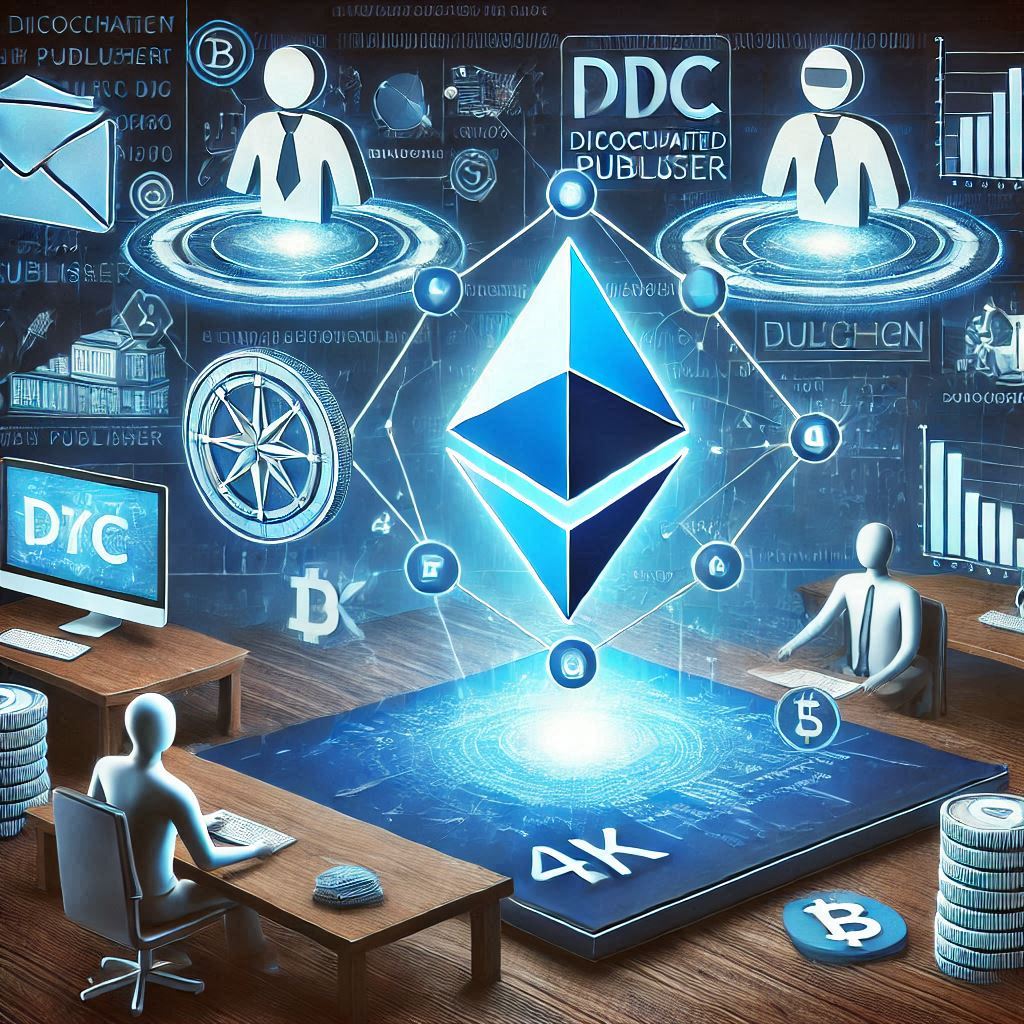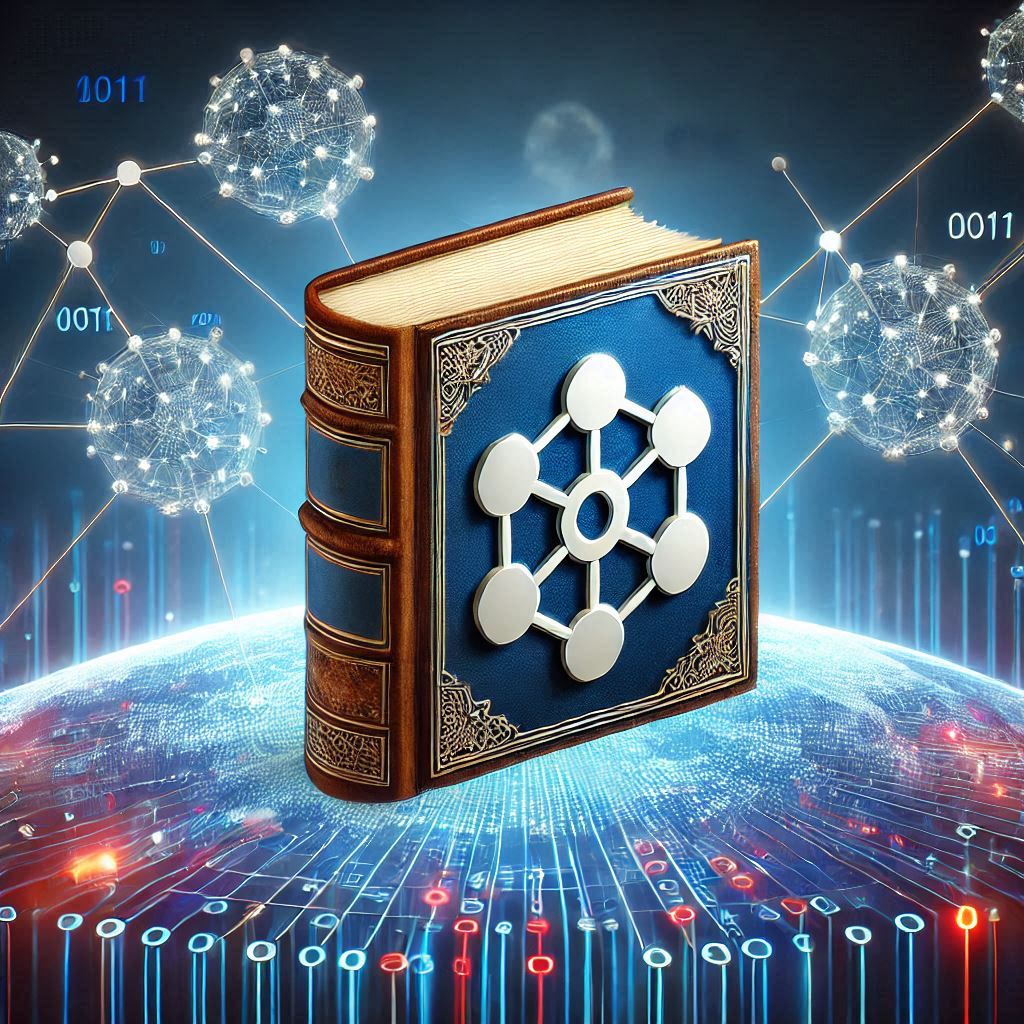Table of Contents
Defining a tBook
Some might argue a tBook is nothing more than a means of placing a dollar amount into a digital book as a gimmick to motivate sales. This view is shortsighted because it overlooks the blockchain technology benefit of combining the intrinsic and monetary value of books, among many other benefits. Imagine a book that increases in value over time, doesn’t weather with age, and lasts as long as it takes the bit to rot. Imagine books that take advantage of video or voice. These fantasies are not merely possible, but a reality.
This is a tBook!
The book’s name comes from the marriage of a crypto-token with a book. For generations the paradigm of books demanded authors adhere to specific publishing requirements such as formatting, and to the varying rules of publishers seeking to squeeze every dime out of a book by trying to fit the book to the market. How many books are turned away for subjective reasons, like "It’s too long. Too short. Or it simply has an audience too limited."
No more!
The tBook eliminates these and many more issues by matching the intrinsic value of the book to a dollar amount. You are not alone if you feel lost in crypto currency, so lets explore these concepts and learn about decentralized finance and its application to publishing.
Crypto
Crypto currency is a digital currency created to facilitate the transfer, sale, and trading of money safely by using cryptography to secure transactions in a immutable way. This digital money is made possible by blockchain technology which creates a ledger that records those transactions. The expansion of this technology allows people from all over the world to safely transfer money or buy and sell. Bitcoin is the most notable crypto currency for being the first to gain widespread acceptance and use.
Bitcoin also presented a new way of handling money because it did not necessitate the use of banks since the blockchain allows money to move from peer to peer. If I buy a car and the seller accepts crypto, I can transfer the money and this sale is taking place between me and the seller. There is no need for a bank because the transactions exist in the blockchain and there is no need to write checks or wire money. More importantly, you are not paying a bank to facilitate the movement of your money!
One of the benefits of Bitcoin has been to hedge against inflation. Over time, as fiat currency buys Bitcoin, the value of that digital currency increases. People will tell you Bitcoin is volatile, which it is, but it has also proven to be a strong store of value. No one who bought Bitcoin five years or ten years ago is complaining. Since its inception, it has gone from 1 coin being worth pennies to about $100,000. The reason this happens is no big mystery because its value is based on scarcity and functionality. Only 21 million Bitcoin exist, and as more are purchased and held, they increase in value.
You will hear many arguments against Bitcoin, most notably that Bitcoin has no intrinsic value. Take a moment and consider this idea of intrinsic value and quickly you will realize the erroneous application of the term. Intrinsic value, by definition, means: “belonging to the essential nature or constitution of a thing.” Misuse of the term is part of a larger issue caused by Capitalism, where people conflate intrinsic and commodity values, such that the value of some 'thing' is solely determined by the commodity backing it. What critics mean to say is that crypto has no "monetary value” due to lacking a commodity standard such as gold, silver, and other resources.
There is not enough gold in Fort Knox to cover American debt. How does the government pay debts? Through public revenue such as taxation, issuing more debt, or by printing money. So what is the true value of the American dollar considering it is constantly at the mercy of increasing debt and printing?
The intrinsic value of the the American dollar is the faith that people have in it.
What is the intrinsic value of Bitcoin? The faith that people put in it stemming from its inability to be artificially increased in value and limited quantity. It is scarce, and the more it is valued, the more scarce it becomes and the more it is worth. It is this scarcity that gives crypto its intrinsic value. Since the creation of Bitcoin, blockchain technology has given birth to new decentralized applications beyond currency, and with this understanding of crypto, we have the foundation for understanding other forms of digital assets referred to as tokens.
Tokens
A crypto token is a digital asset that represents value or utility within a blockchain ecosystem. Tokens are created on blockchain platforms and can be used for various purposes, such as granting access to specific goods or services, representing shares in a project, or serving as an incentive for users to participate in a particular ecosystem. Unlike crypto like Bitcoin or Ethereum, which primarily function as digital currencies, tokens are often issued by tech or crypto start-ups to fund their projects or serve as internal currencies within applications. Tokens are supported by blockchains and are not primarily intended for trading, although they are traded on exchanges.
Unless tied to a purpose or utility, tokens have little or no value. These purposeless tokens have grown popular, such as DOGE and PEPE, which have no function but still have value because they have intrinsic value for millions of people. These "meme coins", though serving no real world activity, evidence the idea that intrinsic value can be the mere trust placed in the item and most importantly — their ability to link intrinsic value with monetary value.
The Disposable Invaluable
Capitalism, though excelling at creating efficient practices to increase profit, just as easily destroys value. There are many reasons why capitalism is detrimental in this manner, but suffice to say, capitalism excels at creating economies of scale in which production and administrative costs become relatively fixed due to higher efficiencies as volume increases. This is why large corporations kill small businesses because they can produce products less expensively due to greater efficiency. However, big companies need to produce large amounts of products to accomplish this and often overproduce, which sometimes leads to losses because supply outstrips demand. Large publishing houses need to sell large numbers of books to achieve this level of production and they accomplish this by estimating the market size, proper pricing, allocating proper amounts of advertising, and being choosy about who they publish.
A publisher is far more likely to publish a book by an author who is already famous or someone with a large social media following then an unknown writer. Though sensible, this practice negatively inverts the market, making the author scarce rather than the book. Technology enables mass publication and digital publishing creates an endless supply of books. This endless supply has no place to go and explains perfectly the graveyard called “Amazon”, where self-published books haunt the pages to eventually NOT sell at .99 cents. Why would you (a self-published author or a publishing house) make infinite books? Why do this especially in light of the genre-filled market of reading further capped by readership size?
Because it is more cost effective then printing a small number of books — no matter how dysfunctional this practice makes the market.
You would have to be a complete moron to say that books have no value when reading increases knowledge, concentration, critical thinking, and many other necessary skills. Literature forms the backbone of knowledge because no matter how great a video or song, more knowledge is often needed to discuss that media intelligently. History cannot be distilled into a twenty minute show or even into an article. Consider for a moment all the books that existed and still only exist in paper form, and you can readily grasp the grotesque disposability of literature when imagining how many texts have been permanently lost to time. Any one with sense admits the intrinsic value of literature but equally frustrates in the lack of monetary value.
Books rot on shelves, fill landfills, and ultimately have no value unless they are kept in pristine condition for a long long time. These problems say nothing of the space and climate control necessary to maintaining a book collection. Capitalism and technology render books, not just monetarily worthless but a drain on the collector wanting to keep them. Try moving a hundred books when you procure a new home. Try paying a mover to move those hundred books and you readily see the cost of book ownership.
So the book that provides so much intrinsic value becomes trapped in its lack of monetary value. If your book collection is huge, the value of the collection must outweigh the cost of maintenance. For most people this is an impossibility. Worse yet, capitalism, due to its focus on dollar value, reduces reading to a chore or academic task by stripping away the monetary value and with it, the intrinsic value. With this understanding, the tBook becomes an obvious means of fixing the problem.
Creating Value With tBooks
In contrast to the meme coin, the tBook has the intrinsic value of books and monetary value to match. The tBook is a combination of a unique token and book. Inside each book is a private key that can be removed from the book and used to transfer the token to a crypto wallet and exchanged for currency or traded. Once the token is removed, the book ceases to function. By marrying the token to the book it becomes a tradable asset on an exchange. The tokens are books since they are the monetary value assigned to the book based on scarcity, supply, and demand. Books are the tokens because they are the intrinsic value linked to the token value.
The linking of these values starts with deciding the number of books/tokens will be minted based on the limited size of the reader market and genre. You have to ask yourself difficult questions concerning originality and actual size of markets. YA books are more popular than literary fiction so more tBooks are needed therefore more tokens must be minted. As an example, a YA author must consider a number of subjective factors such as readership size. If they make too many books, they create too much supply and the book becomes less valuable. One might assume making less books always equals more money because of scarcity but starting too low can hurt the market by limiting the number of sales that can potentially drive up price. Selling small numbers is only valuable in the antique markets. You also need enough books to supply collectors, who will buy the tBooks and store them for years, thus decreasing the supply. Consider also the number of readers who decide to give the tBook to someone else or sell it because they have no interest in collecting books?
There are no perfect answers to these questions. Large corporations struggle estimating product volume and when it comes to authors this analysis further complicates by genre and other factors. A base number of 12000 tBooks seems appropriate because this creates a starting point where you can keep 1000 coins for yourself. Hold back 5000 coins for embedding in books, 1000 coins for gifting purposes or to supply book dealers to sell on their websites. The remaining 5000 will be placed on the exchange for investors. This number was also decided for the purpose of keeping costs low, which we will discuss next.
Tokenomics vs Bookenomics
Keeping cost low when publishing tBooks is vital to authors who have already put endless hours into writing the work. Low cost development of the token also translates into lower cost of the book's initial price which entices buyers and investors. Understanding this low cost methodology involves understanding tokenomics to some degree, or in this case, bookenomics.
Tokenomics is the study of the economics of tokens used in blockchain and cryptocurrency systems. It encompasses design, deployment, and management of tokens, including their supply, distribution, and usage.
Tokenomics involves understanding the token's role in a network, its incentives, and the mechanisms that govern its behavior. This includes:
- Token supply: The total number of tokens in circulation, including any caps or limits.
- Token distribution: How tokens are allocated to stakeholders, such as founders, investors, or users.
- Token usage: How tokens are used within the network, including any transaction fees or rewards.
- Token incentives: The mechanisms that motivate users to participate in the network, such as staking, voting, or liquidity provision.
Tokenomics plays a crucial role in shaping the behavior of token holders and users, and ultimately, the success of a blockchain project.
The preceeding definition of tokenomics is almost synonymous with bookenomics because our book is integrally meshed with a token by value. As such, we must assign enough value to link the intrinsic value with a dollar amount. It should be noted that when referring to a dollar amount, we should not mistake this for the American dollar. Any fiat currency can be used when applying your bookenomics. So how do we apply monetary value to the token?
Liquidity Pools
A liquidity pool is a collective fund of assets, typically cryptocurrencies, that are deposited into a decentralized exchange (DEX) to facilitate trading and provide liquidity. These pools are used to create a market for tokens, enabling users to buy and sell them seamlessly.
Liquidity pools are important when creating a token in decentralized finance (DeFi), in this case decentralized publishing, as they:
- Provide a market for the token, allowing users to trade it.
- Ensures liquidity, making it easier to buy and sell the token.
- Reduces the risk of price volatility and slippage.
- Attracts users to the platform, increasing adoption and usage.
By creating a liquidity pool, token creators can establish a solid foundation for their token's success and user adoption. In simple terms, a tBook liquidity pool provides an investment in the tBook via the token that effectively gives monetary value to the token, thus marrying this value with the intrinsic value of a book. As such, one token equals one book of a specific line of books, and as such the value of that book is tied intrinsically to that specific token. Thus, the starting value of the tBook can grow, or diminish, with the demands of the market.
One does not need to sink thousands and thousands of dollars into a tBook liquidity pool for a number of reasons. Most importantly, tBooks have an intrinsic value that people are willing to pay to obtain and creating a high-dollar liquidity pool to drive up the opening price of the tBook can limit readers from obtaining their tBook. As tBooks are bought and sold, they increase in value over time and this makes investors and readers happy.
Another important reason to keep the cost low stems from the lack of knowing a tBooks true value. The market for books has been inverted for so long that pricing of a book muddles in practices aimed at selling an unlimited supply lacking any fiscal value once purchased. This is also the reason that each has a unique token because each book has a unique intrinisc value to the reader. A famous author might need to mint 100,000 tokens while a new author only needs to mint 12,000, and if each token starts at .20 cents, it is entirely possible that both might eventually sell for $4 a copy based on the demand dictated by their intrinsic value. This leads into perhaps the most important reason to keep cost low: allowing the market to dictate the value of the book.
No one wants to invest in anything that they feel is rigged or unfair.
The Benefits of Decentralized Publishing
When people consider decentralization they often see it as a means of freeing consumers from centralized banking or corporate dominated selling. This is perhaps the most obvious benefit since tBooks remove the need for the publisher and the hassle of obtaining one, but other benefits exist in dPublishing.
The Benefit of Trade
Trading crypto earned a negative view for a variety of reasons outside the purview of this discussion, but perhaps best explained by the Sword Saint, the Kensai, Myomoto Musashi:
The way of the merchant is always to live by taking profit.
The Book of Five Rings
Such contextually isolated statements leave us with an empty feeling, often convoluted in simple adages, like "money isn’t everything.” However, if you build a capitalist society, you should expect some people to prioritize profit beyond saving and investing for the sole purpose of retirement. These are the investors, the traders, who will actively move the price needle of an investment based on perceived value of the tBook, and more importantly, the profit-making of that investment. dpublishing allows books to become an investment for these individuals to do what they love most, create value and profit to benefit everyone involved from the author to the collector to the reader.
Traders ensure a long lifespan for a tBook by creating a store of value. By design, the tBook’s limited numbers serve the limited market of readers and this finite supply makes for a good investment since overtime readers will add the book to their collection, thus further limiting the supply and driving up demand and most importantly — price. For authors, this new paradigm of publishing allows their books to increase over time because tBooks are still subject to loss, carelessness, and other issues that will further reduce supply.
Whatever a person believes about traders, they must admit these investors create the value and essential investment for goods that is sorely missing from the traditional book market.
Reduced Copyright Loss
Intellectual property is always threatened by theft mainly because it has monetary value or enough intrinsic value to warrant counterfeiting or stealing. Art such as music, is more readily understood in this way because the market for music is much larger than the market for books. As such, music is duplicated and given away, or pirated for cheap sale. Books have a similar problem in that they are often given away in paperback form or duplicated digitally and shared. While profit may be a large driver of this activity, the larger driver may simply be the act of sharing. If a book is given to someone else to read this is not an act of malice but instead an act of altruism motivated by a desire to share the intrinsic value of the book.
tBooks help reduce this activity by matching the intrinsic with monetary value. Any one in possession of a tBook, or a copy, can remove the private crypto key rendering that specific book useless and rendering any copies worthless. Due to this nature, tBooks incentive securing one’s library because it carries value. Lending a tBook is taking a chance, even if you trust the person, because the owner doesn’t know if their friend’s computer is secure. As digital citizens, we have become reliant on companies to secure our documents, music, and many other items. In trade, we reliquish true ownership of the good. When a book is purchased on Amazon, do you truly own that book? Can you move it from your Kindle to your Linux computer easily when you tire of Kindle?
No. When you buy a digital book on Amazon, you do not own the book in the traditional sense. Instead, you purchase a license to access and read the book. This is detailed in Amazon’s Kindle license agreement, which states that you have a license to view the eBooks but do not own them outright. Amazon retains the right to revoke access to the eBooks if they choose to do so.
Do not confuse this idea with copyright. Readers must abide by copyright no matter what form the book takes, meaning I cannot reprint or sell a copyright protected book because it is not my copyright.
If you buy a book, you should own that book to transfer to any computer you desire or in a traditional sense to give to a friend. The reason you do not have this option with Kindle is due to the high volume of piracy of books and plagiarism used to make money on your copyright. Entrusting Amazon to protect your book means people give up their ownership in the novel and this further adds to the problem of books being monetarily worthless.
tBooks help to reduce theft while giving back control to the reader. There is no incentive to lend books or to copy books since it is your investment being put on the line. However, there is incentive to give books away.
A New Marketing Paradigm
Using a base number of 12000 tokens, 1000 tokens go to the author, 5000 tokens are held in a liqudity pool reserve, and 5000 are for public sale on the exchange. This leaves 1000 tokens for gifts and marketing. Giving away these tokens benefits the tBook by both adding and removing them from circulation. If a you give away 1000 tBooks, this creates scarcity anytime the receiver decides to keep the book. The market keeps moving since other readers do not collect books and will cash in the token on the DEX. How many self-published authors can afford to give away 1000 copies of their book? How many self-published authors can give away books and remain confident that their book will continue growing in value?
Most self-published authors are lucky to sell a few hundred copies!
Giving away books helps investors, readers, and the author by marketing the book and increasing the trading activity — decreasing the volume.
Promotes Reading
We like to believe that people readily understand the value of reading but as we discussed in the beginning, capitalism drains this value. As such, in a capitalist society, everything falls under the sway of monetary value even books, and to get the intrinsic value of the book to an audience this value must become an investment. Whether one agrees with this idea or not doesn’t matter because it is the problem with books in the current market practices. You cannot live within a capitalist society and expect people to not place price tags and ROI on everything. By accepting this fact, hopefully the tBook incentives reading as an investment in oneself.









